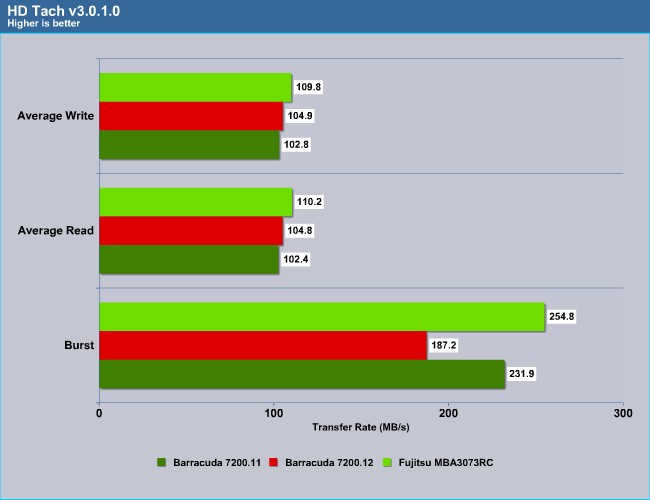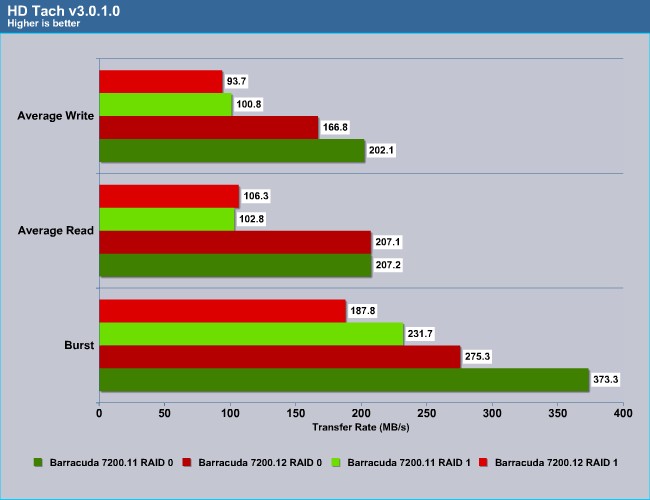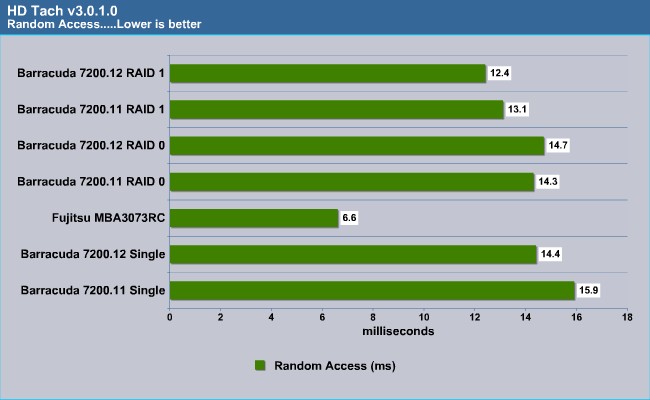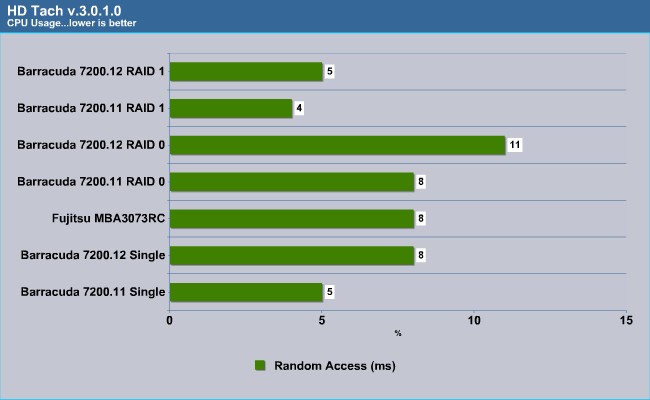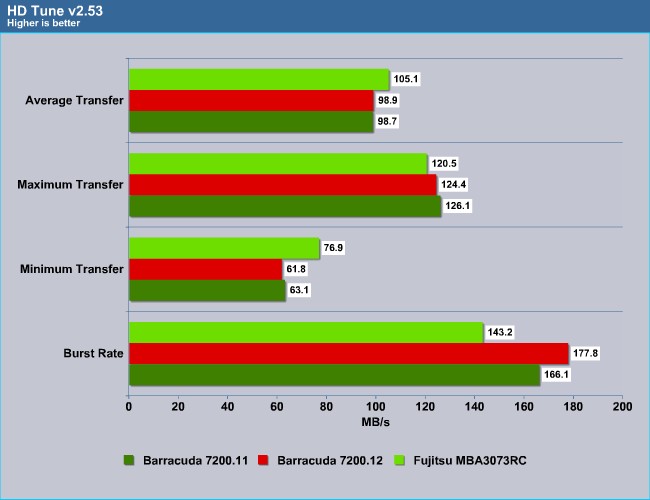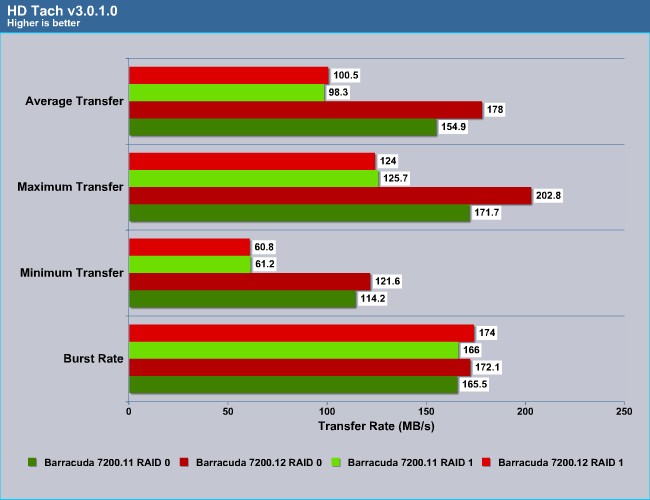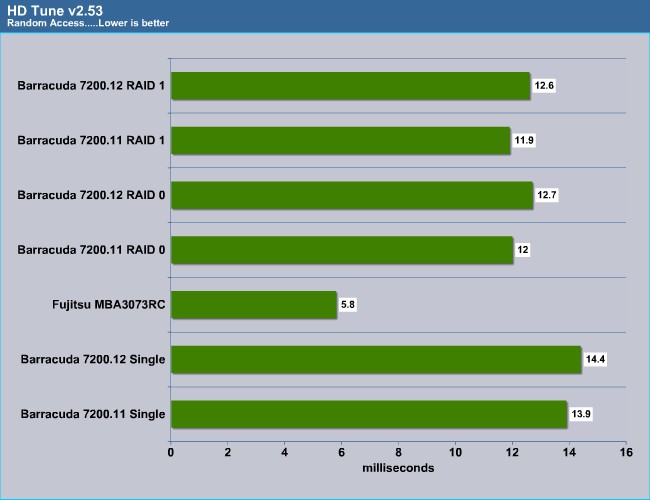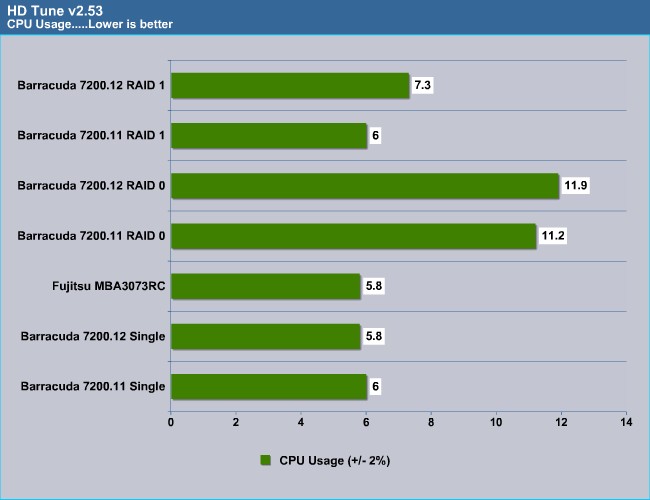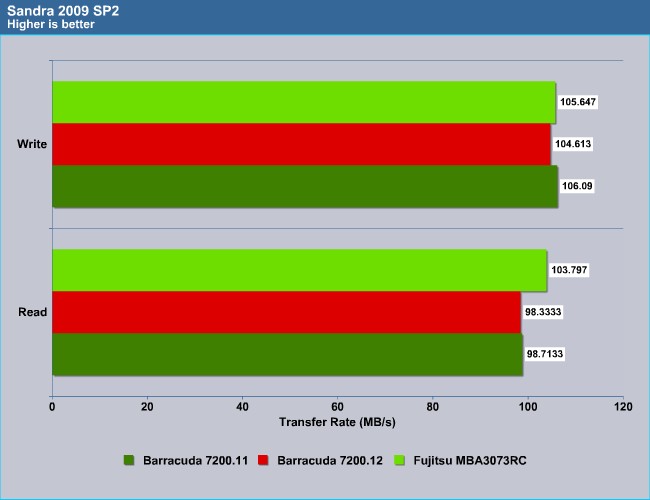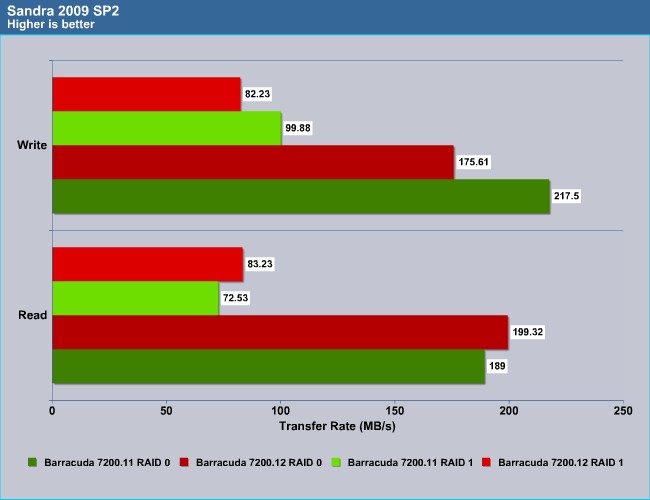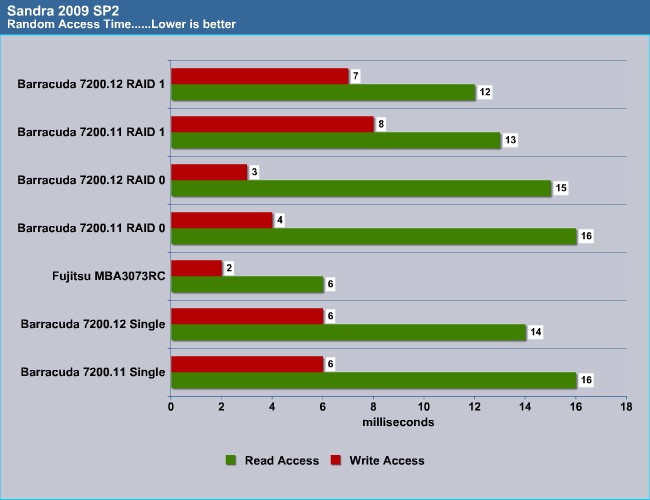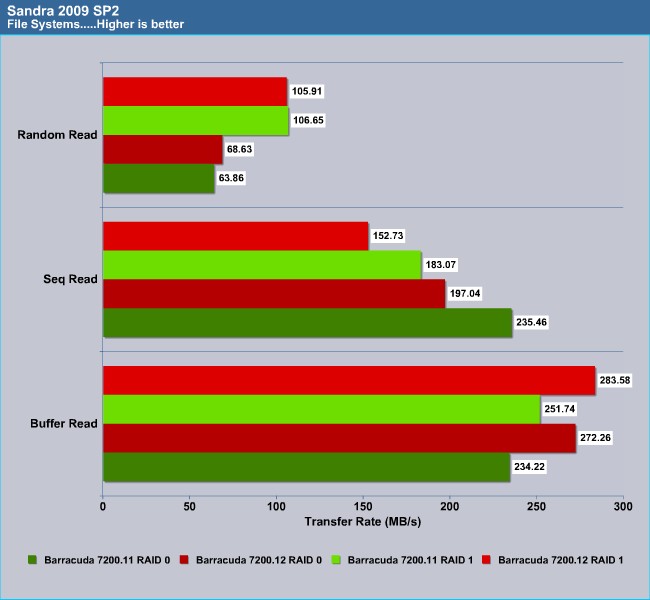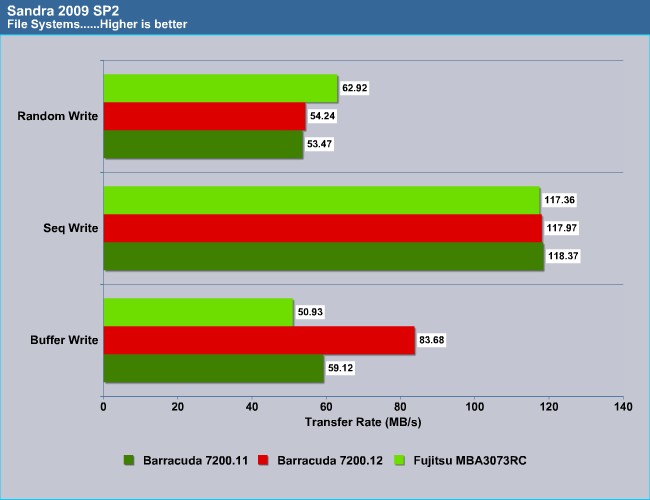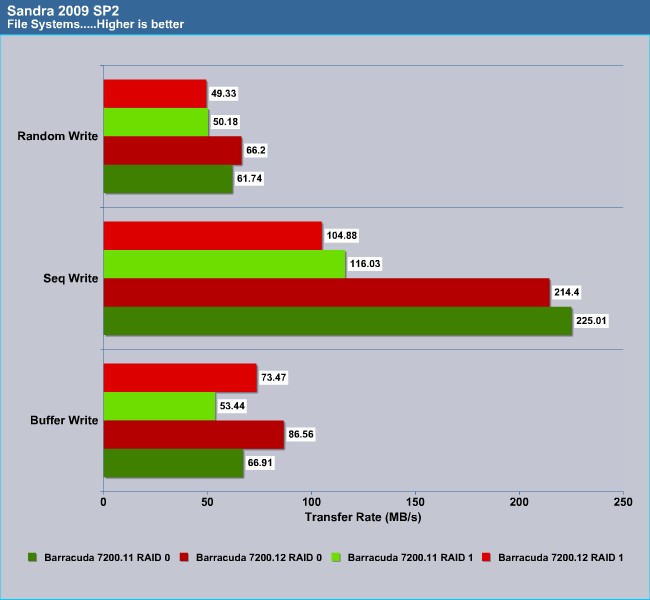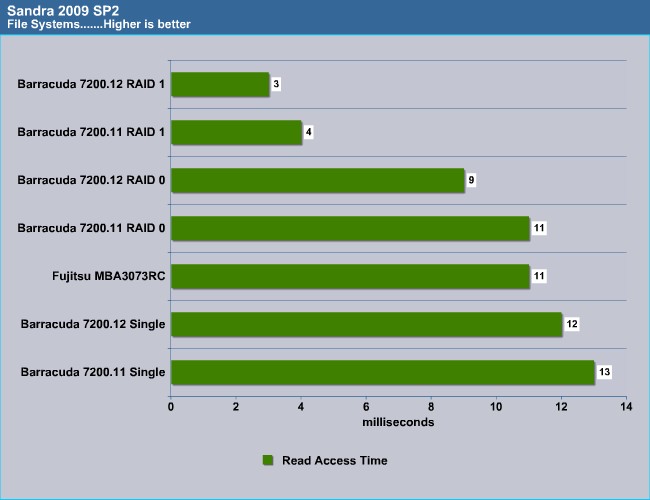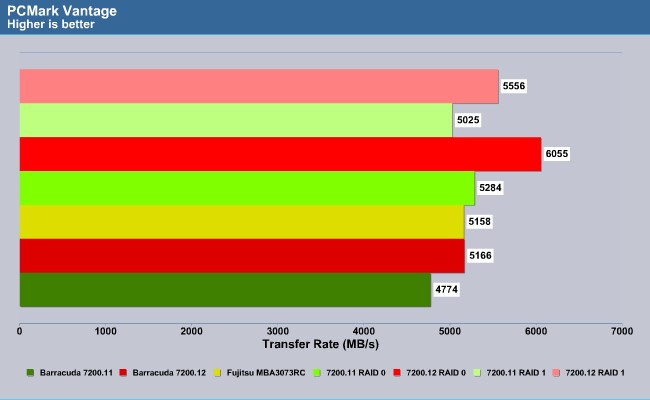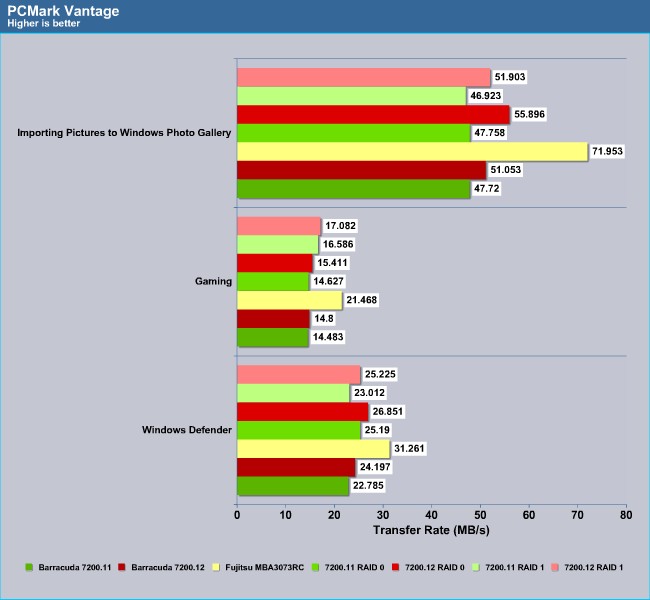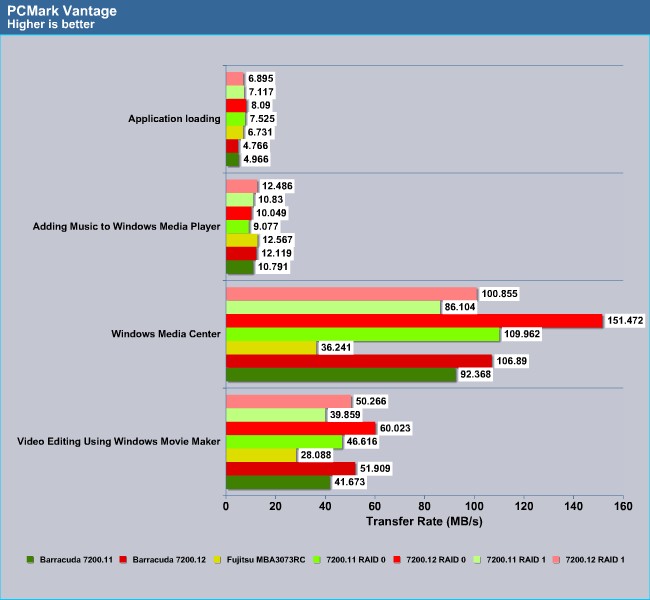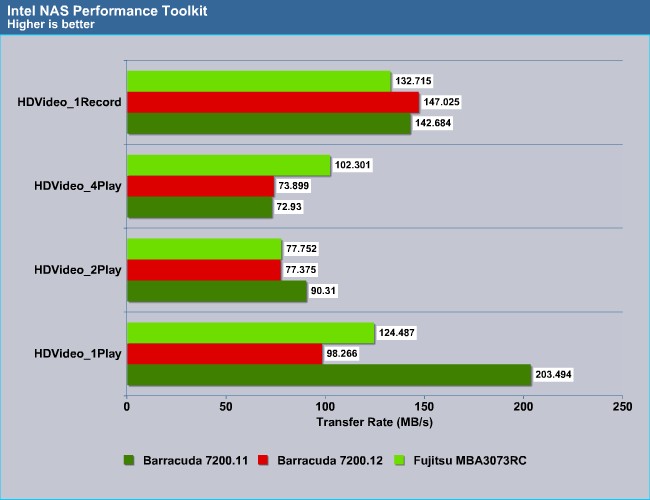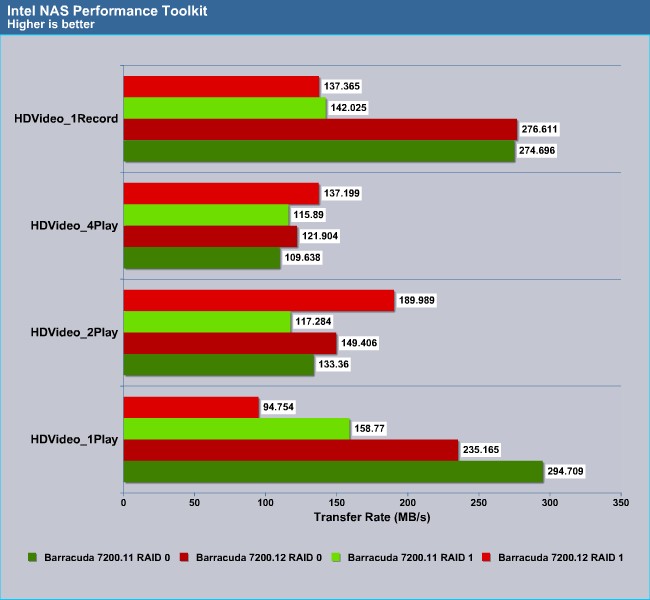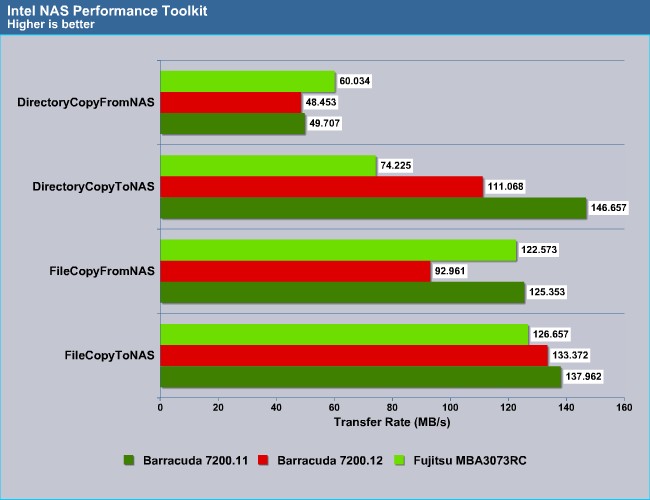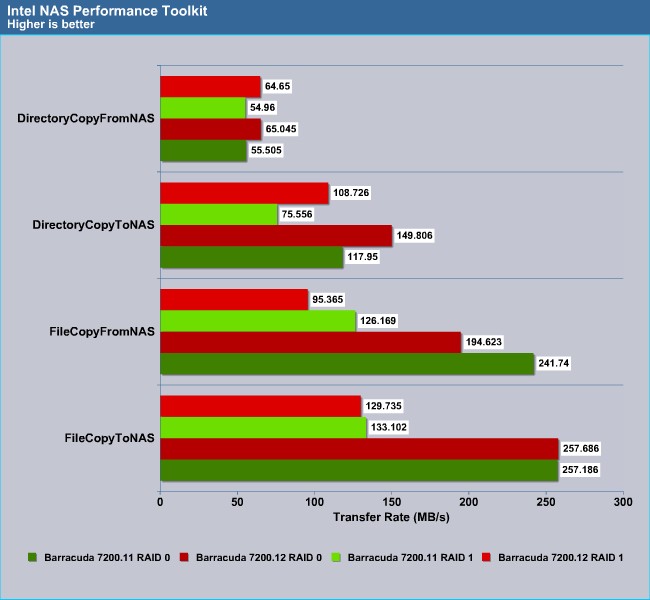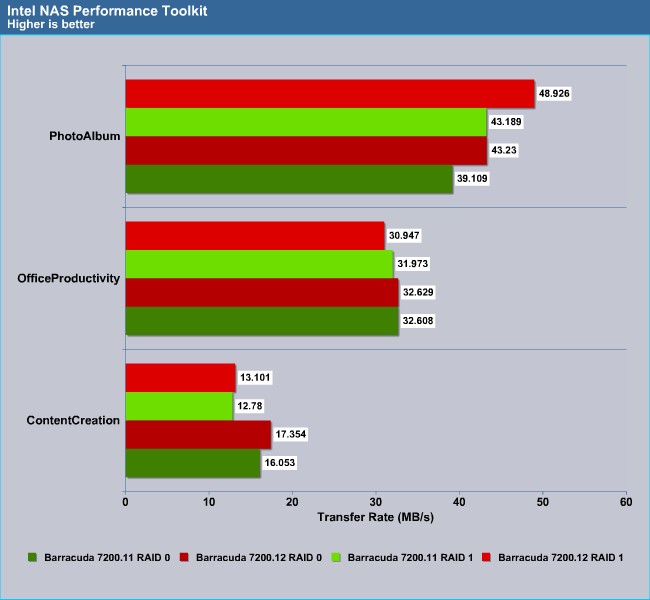Seagate has launched their 12th generation Barracuda hard drive 7200.12. The hard drive is packed with areal density of 500GB per platter which reduces the number of platter needed to acheve 1TB to two. How does it performs against their 7200.11? Let’s find it out as we put them next to each other in single drive, RAID 0, and RAID 1 configuration.
INTRODUCTION
With the emergence of Solid State Drives (SSD), the traditional mechanical drives seem to be facing a big challenge. However, do not count the mechanical drives out yet because compare to the measly storage capacity and the high pricing of the SSD, the mechanical drives still offers the best bang for the buck in terms of gigabit per dollar ratio. This is why you do not see hard drive manufacturers giving up on the mechanical drives completely and coming out with larger storage capacity drives still.
Despite the fact the mechanical drives have been steadily improving their performance over the last few years, they are still stuck at 7,200 RPM and have been for a very long time. Only a few enthusiasts’ drives are able to achieve 10,000 RPM and enterprise drivers are able to achieve the 15,000 RPM. So, how do the mechanical hard drives gain their performance? Easy, by pack larger density per platter. Over the last few years, we have seen the platter density jumps from 200GB all the way to 500GB.
As the platter density increases, hard drives are able to pack more data per disk and, as a result, the time for data retrieval is shorter due to less time that is needed to find the bits of data. Not only that, hard drives are able to perform faster. The larger areal density also allows hard drive manufactures to exceed the storage capacity of 1TB and now we are seeing HD manufactures breaking into 1.5TB and even 2TB. Seagate’s latest Barracuda 7200.12 is the company’s first hard drive that comes with 500 GB platter density.
Having larger areal density not only helps with the performance, it has added benefit of reducing noise levels and power consumption. By packing more data, hard drives require less platters, so the heat output is usually reduced as well.
Seagate’s last generation of hard drives, Barracuda 7200.11, suffers some bad publicity due to a bad firmware which renders hard drives not being detected in the system. Though Seagate has taken an active role releasing a firmware fix for the affected hard drives and they even offer data retrieval for customers who may have their hard drives not working, it still leaves some bad taste in the consumer’s mouth. Seagate is hoping that this latest drive can regain the company’s reputation.
As a turn of event, the Seagate Barracuda has changed its warranty from five years to three years on all internal drives since 2009. Many of us really enjoy the five year warranty that was offered by Seagate back in 2005 but three years is nothing to complain about as it is still within the industry standard.
Seagate: A Brief Overview
Seagate was founded in 1979 and was the first company to build 5.25-inch hard disc drives for the PC. And while it may have seemed like a minor milestone at the time, today this hard disc drive introduction is regarded as one event that helped fuel the PC revolution. Suddenly, people could access unprecedented amounts of information, which eventually gave rise to the Internet and other developments. And for nearly a quarter of a century, Seagate has been developing the technology and manufacturing the products that helped make it all happen.
25 years later, the world runs on information. Every time you access the Internet, use an ATM, watch TV, listen to digital music, enjoy a movie with computer-generated special effects, or use a consumer-electronics device, you access and share large amounts of digital information on disc drives — the core of Seagate’s business.
Seagate also has its sights set years into the future. From hand-held computers and web phones, to intelligent storage that knows what information you want and when you want it, to home networks that deliver entertainment, education and services on demand — Seagate has the knowledge and resources to develop the technologies required for tomorrow. The company is committed to developing new solutions and technologies, pushing storage further than anyone could have imagined in 1979.
At the core of Seagate’s success is its advanced development of hard disc drive products. Seagate is the market leader with products in 1-inch, 2.5-inch and 3.5-inch form factors in internal and external formats. In capacities ranging from 2.5 gigabytes to 750 gigabytes, this comprehensive line includes products for the price-sensitive desktop market, consumer electronics devices (hand-held to in-home audio/video), pocket and portable storage, notebook computers and enterprise-class network servers.
SEAGATE BARRACUDA 7200.12
The Barracuda 7200.12 is the 12th generation of the desktop family hard drive from Seagate. It features 500GB platter density with perpendicular magnetic recording technology. The hard drive features 125 MB/s maximum sustained data rate and up to 3 Gb/s instantaneous burst. In addition, it has Adaptive Fly Height technology offers consistent read/write performance, Clean Sweep to automatically calibrate the hard drive, Enhanced G-Force to protect against handing damage, and Seagate SoftSonic motor to enable ultra-quiet operation.
In addition, Seagate is going green with the Barracuda 7200.12 with 70% or more of the hard drive being made with recycled material. The hard drive is also low-powered and complies with RoHS. As the hard drive only uses two platters instead of three, its weight has been reduced from 644g to 614g, 30g lighter.
The hard drive is available in capacities of 1 TB and 750 GB with 32-MB cache, 500 GB and 320 GB with 16-MB cache, and 250 GB and 160 GB with 8-MB cache. We have received the 1TB drive which we will put it through our test.
7200.11 on the left and 7200.12 on the right.
Seagate markets the hard drive for workstation, desktop RAID, Gaming PCs, High-end PCs, mainstream PCs, and external uses. We shall verify the performance of the drive with our tests as we pair two of the drives in RAID 0 and RAID 1 configuration.
|
Feature/Specification |
Seagate Barracuda 7200.11 |
Seagate Barracuda 7200.12 |
|
Maximum External Transfer Rate
|
300 MB/s
|
300 MB/s
|
|
Spindle Speed
|
7,200 RPM
|
7,200 RPM
|
|
Cache Size
|
32MB (500GB, 640GB, 750GB, 1TB, 1.5TB)
16MB (320GB, 500GB, 750GB)
8MB (160GB)
|
32MB (750GB, 1TB)
16MB (320GB, 500GB)
8MB (160GB, 250GB)
|
|
Platter Size
|
375 GB
|
500GB
|
|
Available Capacities
|
160, 320, 500, 650, 750GB, 1TB, and 1.5 TB
|
160, 250, 320, 500, 750GB, and 1TB
|
|
Average Rotational Latency
|
4.16 ms
|
4.17ms
|
|
Idle Acoustics
|
Up to 2.8 bel (1.5TB)
|
2.5 bels
|
|
Seek Acoustics
|
Up to 3.2 bel (1.5TB)
|
2.7 bels
|
|
Sustained Data Rate
|
Up to 120 MB/s
|
Up to 125 MB/s
|
|
Warranty Length
|
Three Years
|
Three years
|
TESTING
|
Test Platform |
|
|
Processor |
Intel E6600 Core 2 Duo |
|
Motherboard |
EVGA NVIDIA 790I Motherboard |
|
Memory |
2x1GB OCZ Gold Edition PC3-10666 |
|
Drive(s) |
Test Drive # 1: Seagate 7200.11 1.5 TB SATA drive |
|
Controller |
HighPoint Technology RR2640x4 |
|
Graphics |
Foxconn 9500GT |
|
Power Supply
|
Enermax Galaxy 850W |
|
Case |
None |
|
Operating System
|
Windows Vista Ultimate 32 SP1 |
Tests/Benchmarks
- SANDRA 2009 SP2
- HD TACH RW version 3.0.1.0
- HD Tune version 2.52
- ATTO Bench 32
- Intel NAS Performnace ToolKit v1.7
- PCMark Vantage
Test Notes
We decided to test the Barracuda 7200.12 against the last generation of Seagate hard drive, the Barracuda 7200.11. In addition, we throw in the Fujitsu MBA3073RC SAS drive just to see how the faster RPM drive does on performance. We will compare all three hard drives’ performance in each benchmark. In addition, we set two Barracuda 7200.11 and two 7200.12 in RAID 1 and RAID 0 and compare the performance difference between the two generations of hard drives in RAID configuration.
HD TACH
The Barracuda 7200.12’s burst rate lags significantly behind the 7200.11 but its average read and write is a tad faster than the 7200.11. Neither drives are able to compete against the 10,000 RPM SAS drives.
Things look a bit more interesting as we set the drives in RAID configuration. Here we can see that the read performance of the Barracuda 7200.12 comes a bit ahead of the 7200.11, especially when the hard drives are configured in RAID 1. However, in both RAID 0 and RAID 1, the 7200.12 drive’s write performance lags significantly behind the last generation drive.
Random Access time has been improved for the 7200.12 in both single and RAID 1 configuration but it trails the 7200.11 in RAID 0 configurations. Neither drives can compete with the faster RPM SAS drive.
CPU usage is generally within the +-2% of error. The Barracuda 7200.12 does seem to have a tad higher CPU usage than the 7200.11 across the different hard drive configurations.
HD TUNE
HD Tune result is a bit conflicting with what we have seen with the HD Tach. Here, the Barracuda 7200.12 actually has the highest burst rate amongst all of the drives tested. It also beats the 7200.11 in the average transfer test by a small margin but its minimum and maximum transfer rate is a tad slower than the 7200.11.
Barracuda 7200.12 dominates the last generation of drive in HD Tune benchmark in the RAID 0 configuration across all tests. In RAID 1 configuration we see it lags a tad behind the 7200.11 in minimum and maximum transfer but is able to stay ahead in the average transfer and burst rate.
Another conflict with the HD Tach is the random access time where we see the Barracuda 7200.12 trails behind the 7200.11.
CPU usage is fairly even between the two drives but again we see the 7200.12 has a tad higher CPU usage than the 7200.11.
ATTO
Single Drive
| 7200.11 |
7200.12 |
|
|
512K
|
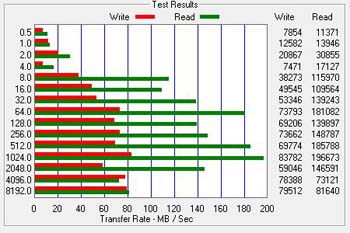 |
 |
|
256MB
|
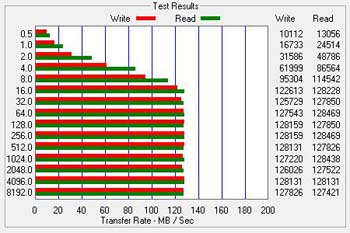 |
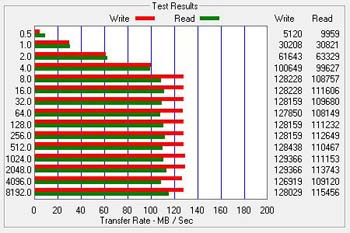 |
We can get more of an idea as to the difference in the performance with ATTO. Here we can see that the Barracuda 7200.12 has a more balanced read and write performance compare to the 7200.11. The current generation of the hard drives beats the last generation of hard drives in read and write transfer rate with 512KB total length test. However, as we increase the total length to 256MB, we see the 7200.11 actually has a slightly better read performance than the 7200.12.
RAID 0
| 7200.11 |
7200.12 |
|
|
512K
|
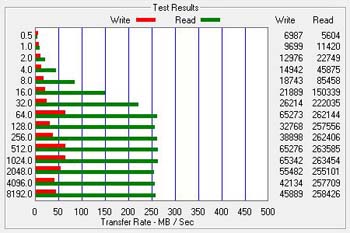 |
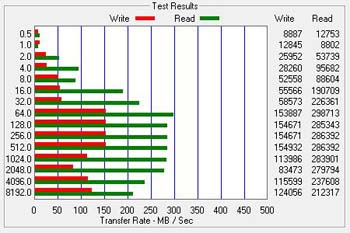 |
|
256MB
|
 |
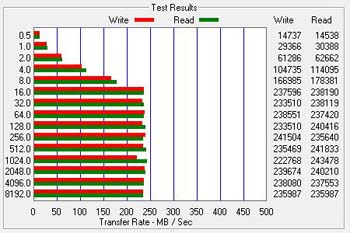 |
RAID 0 configuration shows the 7200.12 has far better write transfer rate than the 7200.11. While the last generation tops at around 50 MB/s, the current generation is able to tops out at around 150MB/s in 512KB test length and at 256MB test length, the current generation is able to produce close to 230 MB/s of write transfer rate compare to the 100 MB/s from the 7200.11. Not only that, the Read performance is also much better with the current generation but the performance gain will only be noticeable with the 256MB test length where the current generable is able to perform more than double of the last generation of the drive.
RAID 1
| 7200.11 |
7200.12 |
|
|
512K
|
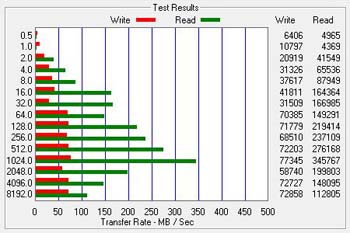 |
 |
|
256MB
|
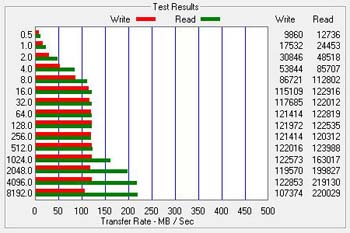 |
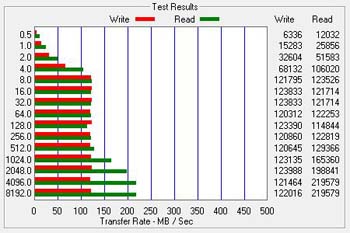 |
RAID 1 configuration shows the Barracuda 7200.12 has a better read and write transfer rate than the 7200.11. Not only that the that but one thing can also be noted when we examine the 512KB test length is that the 7200.12 has sustained the transfer rate even at file size larger than 1024 KB when the 7200.11 has started to show the sign of dropping in the throughput. The 256MB test length for RAID 1 for both drives seems to be fairly similar to each other.
SANDRA 2009 SP2
Disk Benchmark
In our Sandra test, we see the Barracuda 7200.12 once again trails slightly behind the 7200.11 in both read and write tests.
The Barracuda 7200.12 dominates in the Read performance but lags behind the Write performance. This is most likely due to the higher areal density which reduces the time the drive is needed to seek the data.
The random access tests shows the 7200.12 is a tad faster in both read and write.
File System Benchmark
File Systems benchmark shows the current generation of Seagate drive lags behind the last generation in the random and sequential read but it performs better in the buffer read test.
Again, the 7200.12 dominates the buffer read here but it lags significantly behind the sequential read on both RAID 1 and RAID 0 configurations. It is, however, able to edge out the 7200.11 in random read in the RAID 0 configurations.
In our File System benchmark, we see the Barracuda 7200.12’s buffer write performance is far better than the 7200.11 but its sequential write is a tad behind the 7200.11. It is, however, able to regain its performance in the random write test. Looking at the single drive, we can see that the Barracuda 72001.12 would be best serve in an environment where the buffer read/write is important.
The sequential write for the Barracuda 72001.12 trails behind the 7200.11 in both RAID 0 and RAID 1 configuration but it is able to out-performs the 7200.11 in random write in RAID 1 configuration.
Again, Sandra’s File Systems benchmark puts the 7200.12 ahead of the 7200.11.
PCMARK VANTAGE
Vantage shows the Barracuda 7200.12 simply dominates the 7200.11. In fact, it is able to out-perform the Fujitsu SAS drive running at 10,000 RPM.
In our individual benchmarks, we can see that the Barracuda 7200.12 is able to out-perform the 7200.11 with the exception of the application loading benchmark. This is most likely due to the slower burst rate we have observed. On the other hand, we see that in the Windows Media Center and Video Editing application, the 7200.12 has a significant commanding leads over the 7200.11 and even our faster SAS drive is unable to catch up with the SATA drives.
INTEL NAS PERFORMANCE TOOLKIT
Though the Intel NAS Performance ToolKit is designed for testing NAS, it would be a good tool to test hard drive’s performance because it mimics the multi-user environment. The test shows that although the Barracuda 7200.12 lags behind the HDVideo_1Play benchmark, it actually is able to edge out the 7200.11 in the HDVideo_4Play test. This clearly shows that the Barracuda 7200.12 would be the better drive in a multi-user environment where high I/O demand is needed.
The performance lead is even more obvious once we configure the hard drives in RAID 0 and RAID 1 configuration.
In terms desktop file copy, the Barracuda 7200.12 lags behind the 7200.11 in both to and from the hard drive.
POWER CONSUMPTION
With the 500GB platter, Seagate is able to pack only two platters for the 1TB while the 1.5TB drive would require three platters, so the reduction in the number of platters means that the hard drive’s power consumption is also lower. It is able to shed off 3W of power idle and 2W of power load compare to the 7200.11.
TEMPERATURE
The temperature is quite surprising to me. It is capable of lower operation temperature by as much as 4°C idle and 7°C load. I expected it to run cooler but the amount of reduction is a bit of a surprise.
NOISE
Although we do not have the number to back up our claim, based on our ears, the Barracuda 7200.12 is one of the quietest hard drive from Seagate’s desktop line. It is much quieter than the 7200.11 that we tested and also the 7200.10 that I was running on my main system. It’s good to see Seagate works hard to reduce the noise level of their hard drive and power consumption.
CONCLUSION
The Seagate Barracuda 7200.12 is an interesting product. Its performance is a mixed with different benchmarks when we compare to the last generation of the Barracuda family. The hard drive’s burst rate is much slower than the last generation of hard drive and even most of the 1TB hard drives on the market. In addition, its read performance lags behind the 7200.11 but its write performance is a bit better than the last generation of the drive. However, the Barracuda 7200.12 has a far better peak sustained throughput than the last generation of the drive.
In our real-world test with the 3DMark Vantage and the Intel NAS Performance Toolkit Test, we can see the drive’s performance is mixed as well. It fairs better in the write but lags significantly behind the 7200.11 in the read department.
However, the Seagate 7200.12 excels in is RAID and multi-tasking environment. When we pair two of the hard drives together in both RAID 1 and 0, we see the drive is able to sustain a better throughput with multiple file reads. The drive also excels in multiple file read and write tests but falters in the single large file read test.
Where the Barracuda 7200.12 makes up in its mixed bag of performance is with its whisper quiet operation and lower power consumption. This is a great departure from the old Seagate hard drives. And with current tech industry going “green”, it’s nice to see the latest Barracuda is able to shed a few wattages off the last generation of drives.
Because of the mixed performance, it would be hard for us to recommend it to anyone who is looking for the best and fastest drive. However, its lower power consumption, quiet operation, and excellent sustained RAID performance and multi-tasking performance indicate the drive would be best suited for HTPC, server, and/or corporate environment.
We are trying out a new addition to our scoring system to provide additional feedback beyond a flat score. Please note that the final score isn’t an aggregate average of the new rating system.
- Performance 8
- Value 9
- Quality 9
- Warranty 9
- Features 8
- Innovation 9
Pros:
+ Low power consumption
+ Quiet
+ Performs better in RAID environment
+ 500GB platters
+ Great performance in multi-tasking environment
+ Fast turn around time
Cons:
– Performance is mixed
– Burst read performance is slow
– Performance is mixed
Final Score: 8.0 out of 10 and the Bjorn3d.com coveted Bjorn3D’s Seal of Approval.

 Bjorn3D.com Bjorn3d.com – Satisfying Your Daily Tech Cravings Since 1996
Bjorn3D.com Bjorn3d.com – Satisfying Your Daily Tech Cravings Since 1996




